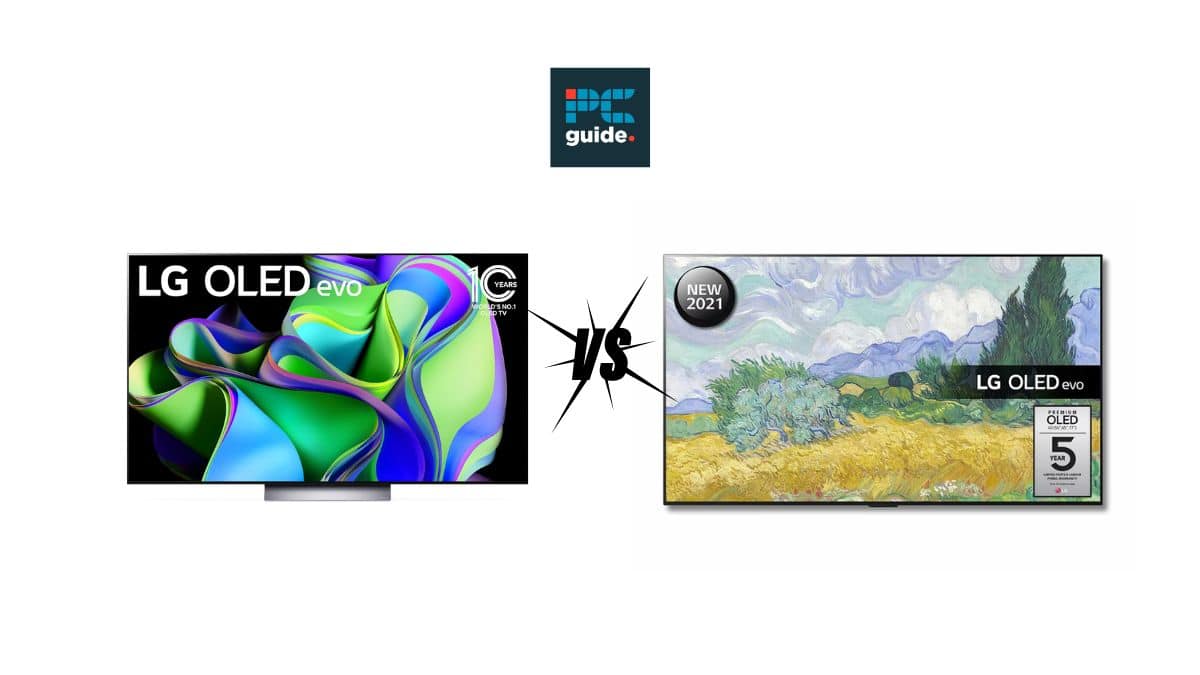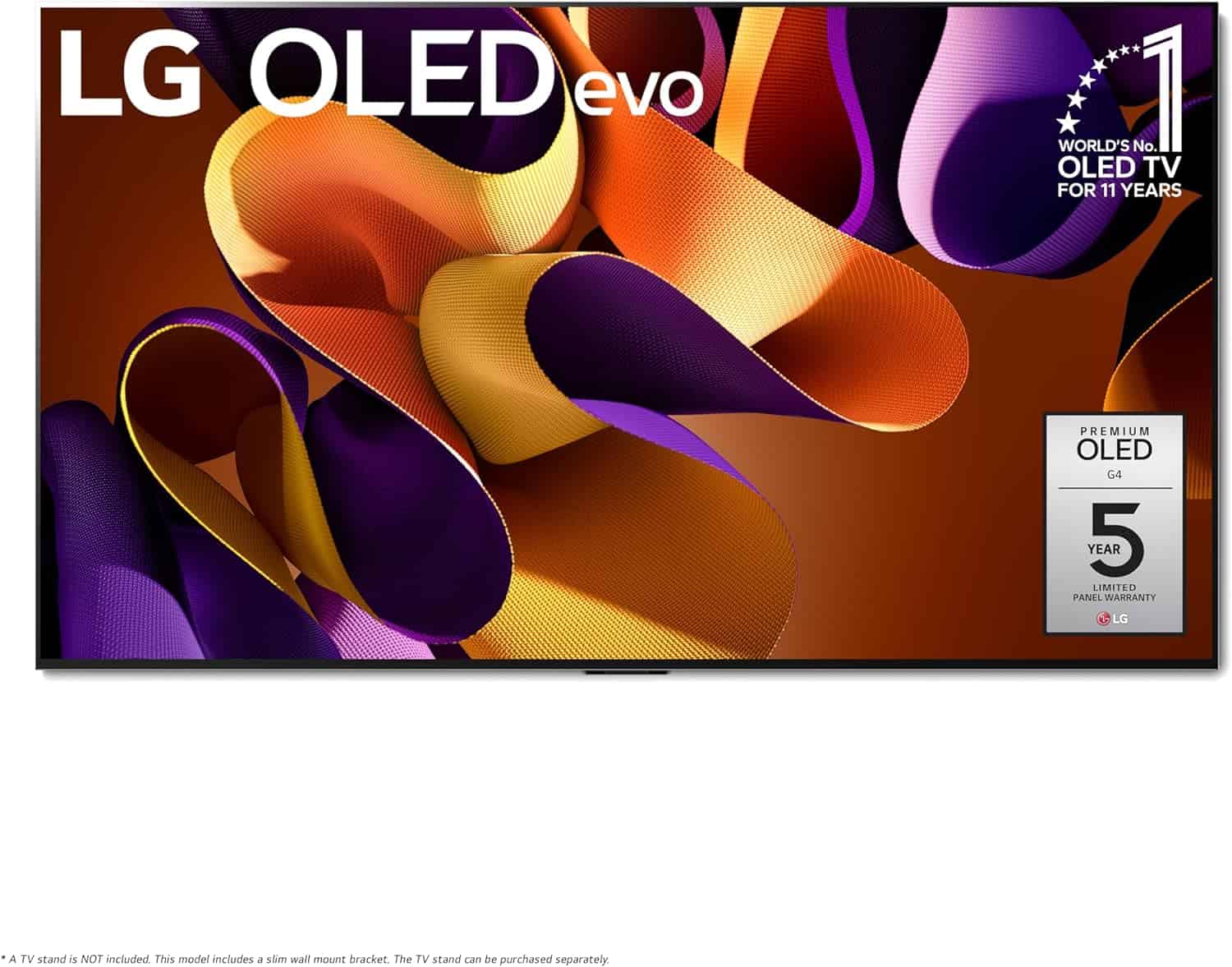LG G4 OLED vs LG G1 OLED – time to upgrade?

Table of Contents
In a side-by-side comparison of the LG G4 OLED vs LG G1 OLED, let’s see how the 2024 model in LG’s G-Series compares to its predecessor from 2021. CES 2024 saw LG unveil the new G4 OLED, which offers better brightness thanks to the new Micro Lens Array technology developed by LG just this year. While the G1 might struggle to deliver high levels of brightness in well-lit rooms, the MLA technology helps the G4 surpass that historical struggle. Of course, it’s got a wealth of other tricks up its sleeve too.
So, here’s a bit more detail about how the G4 and G1 OLEDs go head to head, helping you decide if next-gen or last-gen is the way to go before you make your investment.
Prime Day is finally here! Find all the biggest tech and PC deals below.
- Sapphire 11348-03-20G Pulse AMD Radeon™ RX 9070 XT Was $779 Now $739
- AMD Ryzen 7 7800X3D 8-Core, 16-Thread Desktop Processor Was $449 Now $341
- ASUS RTX™ 5060 OC Edition Graphics Card Was $379 Now $339
- LG 77-Inch Class OLED evo AI 4K C5 Series Smart TV Was $3,696 Now $2,796
- Intel® Core™ i7-14700K New Gaming Desktop Was $320.99 Now $274
- Lexar 2TB NM1090 w/HeatSink SSD PCIe Gen5x4 NVMe M.2 Was $281.97 Now $214.98
- Apple Watch Series 10 GPS + Cellular 42mm case Smartwatch Was $499.99 Now $379.99
- ASUS ROG Strix G16 (2025) 16" FHD, RTX 5060 gaming laptop Was $1,499.99 Now $1,274.99
- Apple iPad mini (A17 Pro): Apple Intelligence Was $499.99 Now $379.99
*Prices and savings subject to change. Click through to get the current prices.
LG G4 OLED vs LG G1 OLED: Specs and Performance
| LG G4 MLA OLED | LG G1 | |
| Sizes | 55″, 65″, 77″, 83″, 97″ | 55″, 65″, 77″ |
| Ports | 4x HDMI 2.1 | 4x HDMI 2.1 |
| Panel Type | WOLED (MLA) | WOLED |
| Resolution | 3840 x 2160p (4K) | 3840 x 2160p (4K) |
| HDR | HDR10, HLG, Dolby Vision | HDR10, HLG, Dolby Vision |
| Smart TV software | Web OS 24 | Web OS 6.0 |
| Processor | Alpha 11 | Alpha 9-4 |
| Native refresh rate | 144Hz | 120Hz |
Features
The LG G1 is equipped with the α9 Gen 4 AI Processor 4K, focusing on enhancing picture quality through deep learning technology. This processor excels in upscaling content, improving motion handling, and fine-tuning colors for a vibrant viewing experience. It represents LG’s commitment to delivering high-quality images and sound by analyzing and optimizing each scene.
Contrastingly, the LG G4 OLED introduces the Alpha 11 AI processor, marking a significant leap in LG’s television technology. This cutting-edge processor is designed to offer a 70% increase in graphics power and a 30% boost in overall processing compared to the G3 series, which already was an improvement over the G1. When comparing this to the α9 Gen 4 AI Processor of the G1, the Alpha 11 in the G4 suggests an even more remarkable enhancement in picture quality and TV performance.
Additionally, the G4 OLED sets itself apart with its Micro Lens Array (MLA) WOLED panel and a native 144Hz refresh rate. The MLA technology aims to amplify brightness and color vibrancy, especially beneficial in well-lit rooms, where the G1 might not perform as strongly. The upgrade to a 144Hz refresh rate from the G1’s 120Hz further ensures smoother motion, making the G4 particularly attractive for gaming and fast-paced content.
Performance and brightness
The LG G4 OLED introduces a noteworthy advancement in brightness with its new Peak Highlighter feature, powered by the Alpha 11 AI processor. This innovative feature significantly enhances the TV’s ability to reach peak brightness levels up to 150% higher than traditional OLED models, such as the LG B4.
This substantial increase in brightness ensures that the G4 OLED can deliver exceptionally vibrant and vivid images, even in well-lit environments, setting a new standard for OLED TV brightness and providing a more immersive viewing experience.
The LG G4 OLED brings a game-changing feature with its Micro Lens Array (MLA) technology, paired with a built-in heatsink. Unlike the G1, the G4 uses this advanced tech to significantly boost its screen brightness. The MLA tech enhances how light is projected from the screen, making the display much brighter, especially in well-lit environments where older models like the G1 might fade. What’s more, the LG G4 benefits from Nvidia G-sync and AMD Freesync technologies for the first time; this makes it even better for console and PC gamers, especially due to its 0.1ms response time and up to 144Hz refresh rate.
The heatsink’s role is to keep things cool, allowing the G4 to shine brightly for longer periods without overheating or damaging the screen. This means that whether you’re watching in a sunny room or a darkened den, the G4 offers a consistently clear, vibrant picture that outperforms its predecessors.
LG G4 OLED vs LG G1 OLED: Price
Although TV prices tend to stay fairly balanced over time, they do change gradually. The G1 is a 2021 TV, so prices have changed since its release three years ago. If you're planning to buy now, the LG G1 will come at a better price than the G4, as it is a last-gen model; however, every extra penny is worth it with the G4, especially due to the MLA technology this one comes with. Just so you can keep a reference of the price, the G4 55-inch MSRP is $2,600, while the 65-inch G1 OLED is currently going for around $1,900.
Is the LG G4 OLED better than the LG G1 OLED?
When it comes to which TV is actually better, the LG G4 stands out as the superior choice in this comparison. It offers a broader range of sizes and incorporates the proven Micro Lens Array technology, as well as G-Sync. Its advancements in brightness boosts, performance, and AI capabilities solidify its position as a top-tier TV, making it the ideal choice for those seeking the best possible experience of visual quality. However, it is worth noting that because of being a few years older, the G1 might currently represent a better value purchase if you get it discounted.
Ahead of its launch, we’ve been comparing the LG G4 OLED to a wide range of models in the premium TV lineup, including the Sony A90J, and devices from LG’s C-series such as the LG C4 that was also launched at CES.



